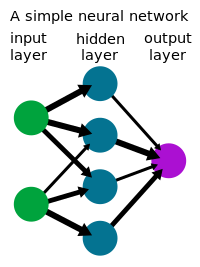
Photo from wikipedia
Purpose Magnetic resonance imaging (MRI) along with complex networks is currently one of the most widely used tool for recognition of structural changes in neurodegenerative pathologies, such as Alzheimer’s disease… Click to show full abstract
Purpose Magnetic resonance imaging (MRI) along with complex networks is currently one of the most widely used tool for recognition of structural changes in neurodegenerative pathologies, such as Alzheimer’s disease (AD) [1] . We present a medical imaging study for AD pattern recognition performed through the combined use of complex networks and machine learning techniques. Methods A set of 300 structural T1 brain scans, from subjects of the Alzheimer’s Disease Neuroimaging Initiative, including AD patients, normal controls (NC) and mild cognitive impairment (MCI) subjects, were used. Our complex network description obtained by dividing brain scans into equal boxes can provide a convenient mathematical framework to model structural inter- and intra-subject brain similarities given in terms of Pearson’s correlation. Network features were used to feed supervised learning algorithms in order to exploit this base of knowledge for accurately discriminating the three groups. In this study, we compare four different machine learning models: Random Forests, Naive Bayes, Support Vector Machines and Neural Networks. We adopted a 5-fold cross-validation framework with a nested feature selection. Results Experimental results show that our brain connectivity model allows the extraction of complex network features able to distinguish healthy subjects respectively from illness and MCI subjects with an Area Under the Curve (AUC) greater than 0.90. Besides, we demonstrated that different supervised classification models permit a robust support to the early diagnosis of AD patients and a robust identification of brain regions significantly connected to the disease. Conclusions We can conclude the developed complex network approach has a good potential to become a method of predictive nature.
Journal Title: Physica Medica
Year Published: 2018
Link to full text (if available)
Share on Social Media: Sign Up to like & get
recommendations!